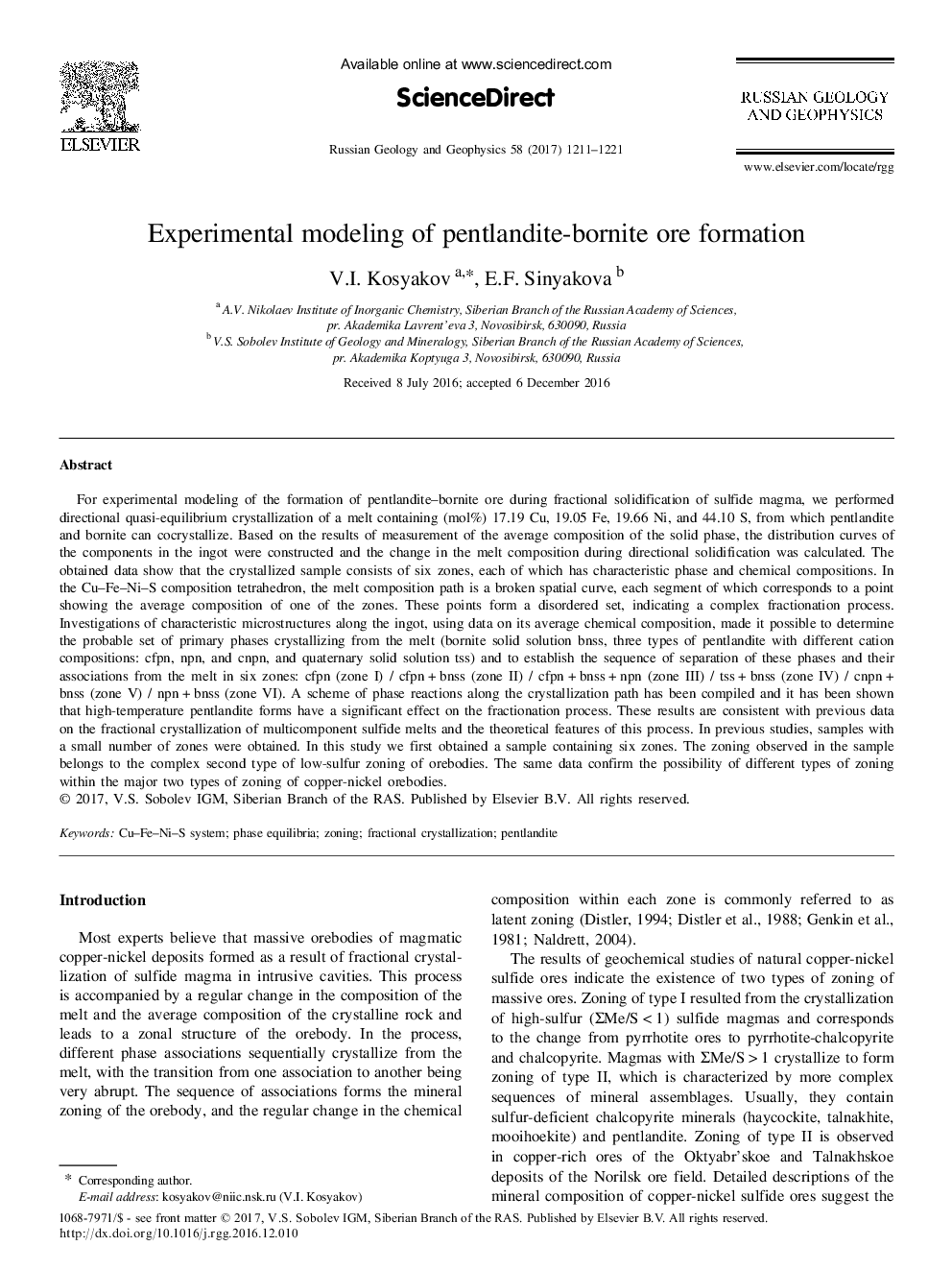| کد مقاله | کد نشریه | سال انتشار | مقاله انگلیسی | نسخه تمام متن |
|---|---|---|---|---|
| 5786875 | 1641041 | 2017 | 11 صفحه PDF | دانلود رایگان |
عنوان انگلیسی مقاله ISI
Experimental modeling of pentlandite-bornite ore formation
ترجمه فارسی عنوان
مدلسازی تجربی از تشکیل سنگ معدن بنتیت پنتلندیت
دانلود مقاله + سفارش ترجمه
دانلود مقاله ISI انگلیسی
رایگان برای ایرانیان
کلمات کلیدی
موضوعات مرتبط
مهندسی و علوم پایه
علوم زمین و سیارات
زمین شناسی
چکیده انگلیسی
For experimental modeling of the formation of pentlandite-bornite ore during fractional solidification of sulfide magma, we performed directional quasi-equilibrium crystallization of a melt containing (mol%) 17.19 Cu, 19.05 Fe, 19.66 Ni, and 44.10 S, from which pentlandite and bornite can cocrystallize. Based on the results of measurement of the average composition of the solid phase, the distribution curves of the components in the ingot were constructed and the change in the melt composition during directional solidification was calculated. The obtained data show that the crystallized sample consists of six zones, each of which has characteristic phase and chemical compositions. In the Cu-Fe-Ni-S composition tetrahedron, the melt composition path is a broken spatial curve, each segment of which corresponds to a point showing the average composition of one of the zones. These points form a disordered set, indicating a complex fractionation process. Investigations of characteristic microstructures along the ingot, using data on its average chemical composition, made it possible to determine the probable set of primary phases crystallizing from the melt (bornite solid solution bnss, three types of pentlandite with different cation compositions: cfpn, npn, and cnpn, and quaternary solid solution tss) and to establish the sequence of separation of these phases and their associations from the melt in six zones: cfpn (zone I) / cfpn + bnss (zone II) / cfpn + bnss + npn (zone III) / tss + bnss (zone IV) / cnpn + bnss (zone V) / npn + bnss (zone VI). A scheme of phase reactions along the crystallization path has been compiled and it has been shown that high-temperature pentlandite forms have a significant effect on the fractionation process. These results are consistent with previous data on the fractional crystallization of multicomponent sulfide melts and the theoretical features of this process. In previous studies, samples with a small number of zones were obtained. In this study we first obtained a sample containing six zones. The zoning observed in the sample belongs to the complex second type of low-sulfur zoning of orebodies. The same data confirm the possibility of different types of zoning within the major two types of zoning of copper-nickel orebodies.
ناشر
Database: Elsevier - ScienceDirect (ساینس دایرکت)
Journal: Russian Geology and Geophysics - Volume 58, Issue 10, October 2017, Pages 1211-1221
Journal: Russian Geology and Geophysics - Volume 58, Issue 10, October 2017, Pages 1211-1221
نویسندگان
V.I. Kosyakov, E.F. Sinyakova,
